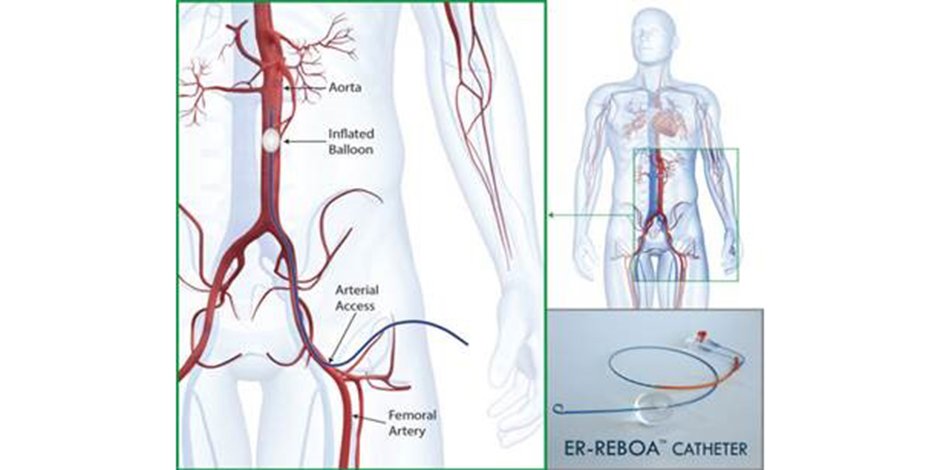Using Innovative Balloon Technology, NYC Health + Hospitals/Jacobi Saves Woman’s Life
New Technology and Treatment Can Help Stem Extreme Internal Bleeding
Jun 20, 2017

Trauma surgeons at NYC Health + Hospitals/Jacobi today announced they were successful in saving the life of a trauma victim by stemming extreme internal bleeding using a pioneering intervention called Resuscitative Endovascular Balloon Occlusion of the Aorta (REBOA). This is the first successful application of the procedure within an emergency department setting in New York City.
The patient, Nanetta Hall, was struck by an automobile and arrived at the emergency department at NYC Health + Hospitals/Jacobi in critical condition, with pelvic and extremity injuries. She was bleeding and not responding to standard treatments, such as blood transfusions or pelvic compression. Most patients respond to these treatments, and of those who don’t, many benefit from the existing next course of action (a combination of interventional radiology and a specialized gel foam). But of the remaining subgroup of patients with pelvic and extremity injuries who cannot be saved using existing options, the REBOA catheter may be a life-saving option.
Sensing that time was of the essence, Trauma Surgeon Dr. Edward Chao, with consultation from Vascular Surgeon Dr. Aksim Rivera and Trauma Medical Director Dr. Sheldon Teperman, inserted a REBOA catheter through the femoral artery and inflated the catheter’s balloon to stop the massive blood loss. The balloon is placed above the bifurcation of the aorta, so that blood continues to flow to the vital organs, but circulation to much of the lower half of the body is temporarily stopped, buying time for trauma surgeons to identify the specific location(s) of the bleeding and transition to an appropriate intervention.
In Ms. Hall’s case, she was brought to the Interventional Radiology Suite and a pelvic angiogram was performed. The balloon had allowed the body’s natural clotting processes to stem the severe blood flow. She subsequently underwent several surgeries on her pelvis and leg to repair the damage.
Dr. Teperman notes that halting circulation to the lower half of the body is not without risk, and there is urgency to resume the circulation. While research has yet to identify what the safe time window is, Dr. Teperman believes that deflating the balloon within an hour would be quite safe for most patients. While the tool may offer other opportunities for trauma patients, he notes that NYC Health + Hospitals/Jacobi plans to use it primarily on severe pelvic injuries. “With what we currently know, I’d discourage cutting off circulation higher in the body for the risks it could pose to vital organs. And for injuries to the lower extremities, we have existing options that we believe are more effective.”
“I still remember the collision very clearly and being rushed to the emergency room,” Ms. Hall said. “The trauma team not only saved my life, they saved my leg, too. They acted to stop my internal bleeding, and I wouldn’t be here today without them.”
“When someone hits the doors of our emergency room, we do any- and everything to save their lives,” said Dr. Teperman. “I’m pleased we were able to act quickly and successfully to save our patient.”
Ms. Hall has been discharged to a rehabilitation facility.
NYC Health + Hospitals/Jacobi remains the Bronx and Southern Westchester’s Level I Trauma facility, staffed by surgeons, emergency medicine physicians, nurses, and other experts in traumatic injuries and care. The designation means the staff is on site and ready 24/7 to deal with any emergencies that may arise.
NYC Health + Hospitals is already expanding the new REBOA catheter technology to the public health system’s other trauma centers.